ABS: Aims, Barriers and Solutions
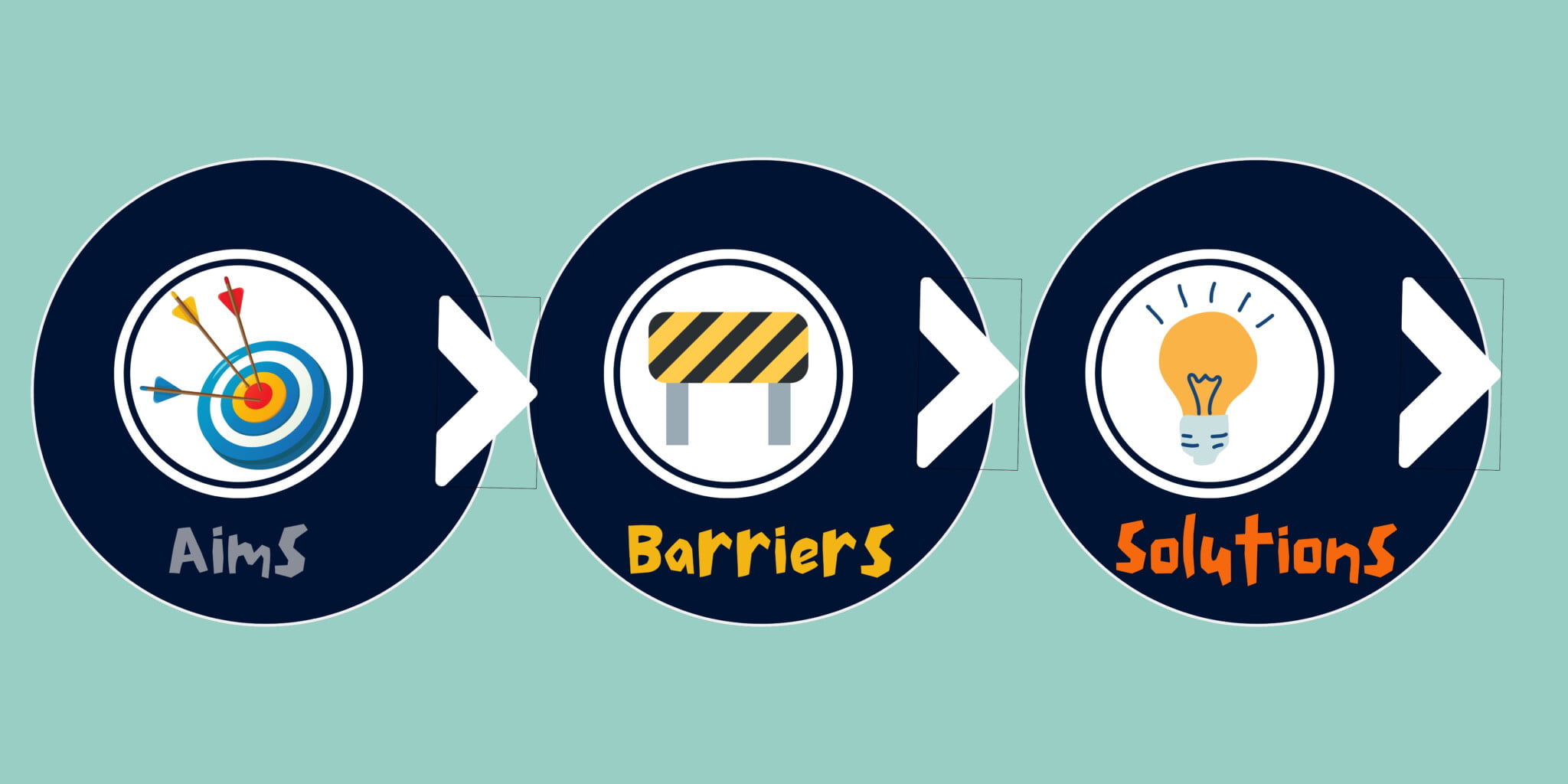
We would like to introduce you to our ABS model. What is it you ask? ABS stands for Aims, Barriers and Solutions. We incorporate an effective and useful action-planning model into our workshops. It is designed to run for the duration of our sessions to capture key moments of learning throughout.
Get your thinking caps on – it’s time to action plan!
In the training room (or virtual training room) we have three whiteboard areas; Aims, Barriers and Solutions. At the beginning of the workshop, there is a facilitated discussion exploring delegates’ desired aims from the session. Our team will start capturing ‘Aims’ but also on the other whiteboards ‘Barriers’ and indeed, ‘Solutions’ as they are brought up. Quickly delegates understand the process – they are encouraged and empowered to also write on each of the boards as appropriate. It’s an open, inclusive, and interactive space where all ideas are welcome.
Although the action planning is conducted in groups, the ABS planning also highlights what team members can be doing individually in their departments to benefit the wider collective. We also debrief our clients on the action plans created in the sessions to communicate which areas their teams think need more attention in the workplace.

What are the benefits of an action planning (ABS) model?
We like to think of it as the stepping stone from learning to creating a timeline of clear measures delegates can take. If you’ve learnt about a subject but need help figuring out how to carry out your learning, ABS helps delegates to compartmentalise and have a clear vision going forward. It gives attendees of our sessions the foundation for creating an effective, thorough, and attainable plan they can refer to at any time.
- ABS identifies collective and personal aims within the workplace which can drive employees to take positive action
- Provides clear and measurable objectives
- Creates relevant goals that align with delegates’ values and long-term objectives
- Provides the foundation for delegates to track progress
- Develops knowledge and awareness of workplace issues
- Creates a new set of goals and priorities – opens different avenues for teams’ progression
- Identifies gaps where employees need guidance, support and resources
- It gives delegates something to refer to after the sessions
- Focuses on overall wellbeing
- We know we’ve mentioned this one already but that’s because it’s key – it puts learning into action!
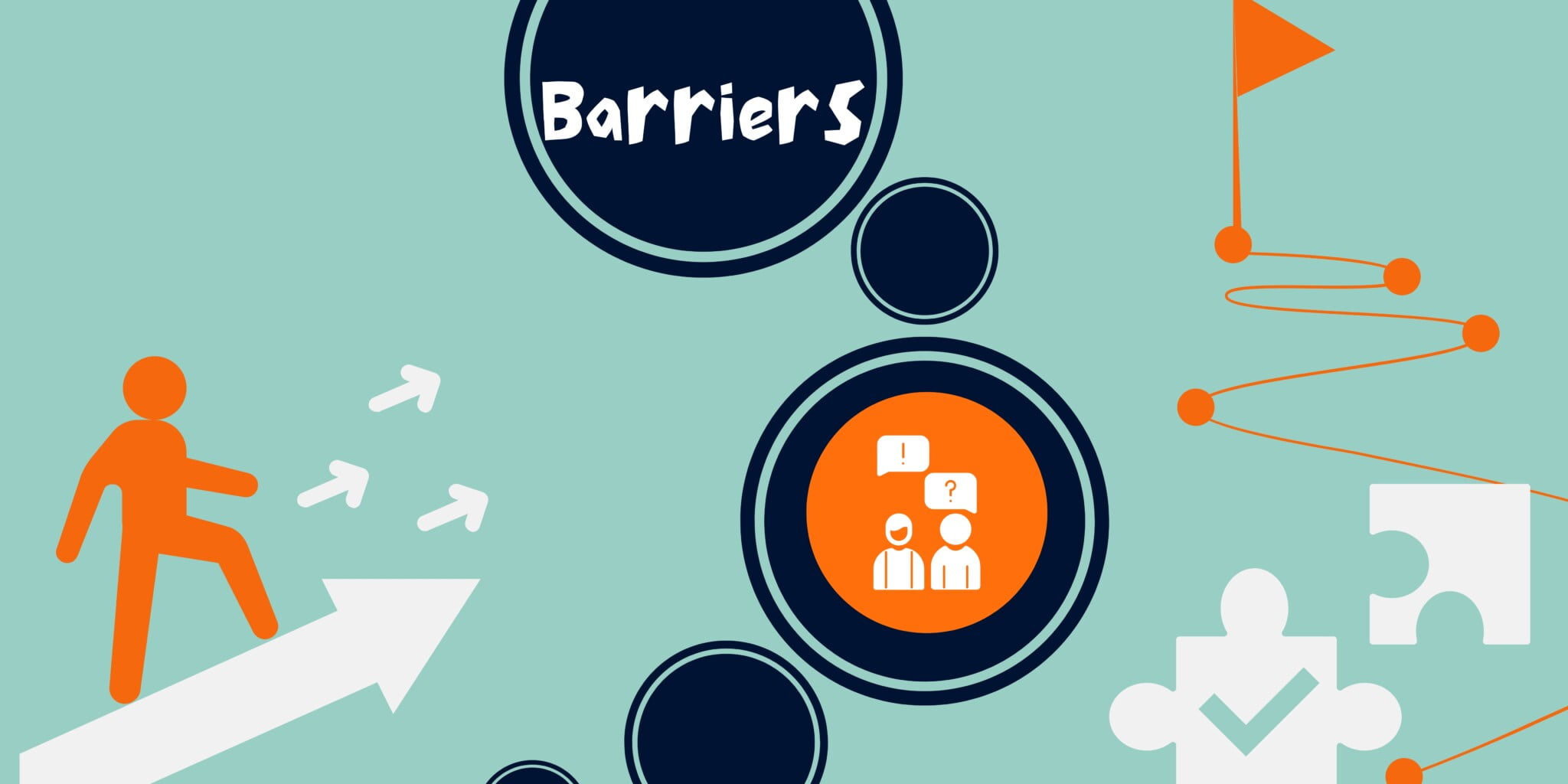
Barriers in the workplace and how we overcome them through action planning
The aims, barriers and solutions identified in the workshops can differ from organisation to organisation. However, throughout our training sessions, we have found some general crossovers. Sometimes the smallest of obstacles get overlooked and this can have a
knock-on effect throughout a company. Here are some common barriers we have found throughout our training sessions:
- Not fostering growth or development (not providing opportunities) = lack of incentive
- Lack of teamwork activities and mixing of different departments
- Ineffective leadership
- Lack of trust
- Poor conflict resolution skills
- Lack of incentives
- Communication gaps
- Employees not feeling valued/heard
- Companies not providing regular feedback on employees’ development
- Unconscious bias
- Tight deadlines or inflexible hours
- Lack of digital accessibility
- Lack of diversity awareness
As you can see above, there are a range of workplace barriers. This is why teams need to participate in group training exercises on topics such as resilience and wellbeing, diversity and inclusion, bias awareness, and inclusive recruitment.
Last year we held a series of DEI Leadership workshops for one of our clients.
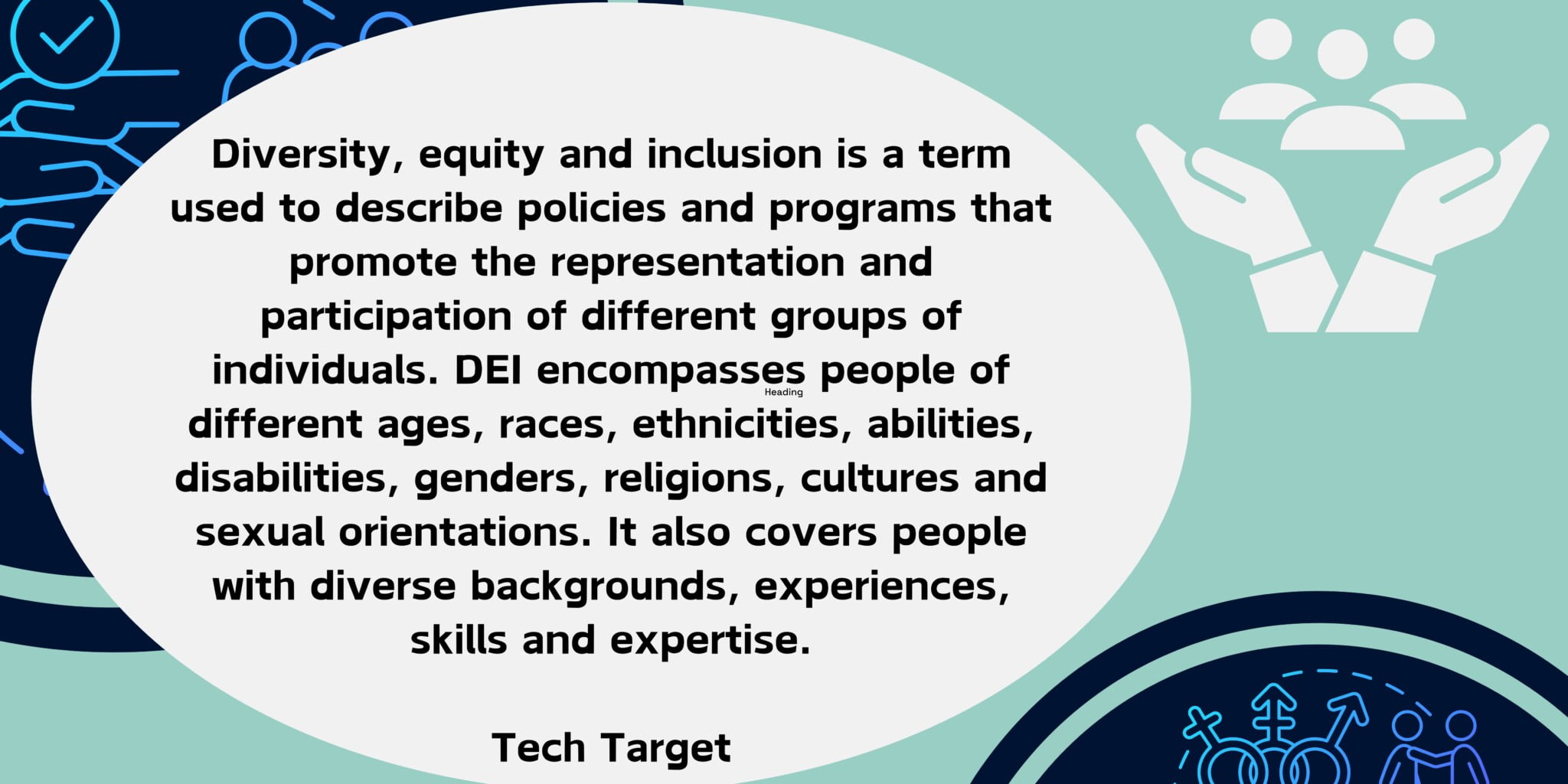

Action plan template
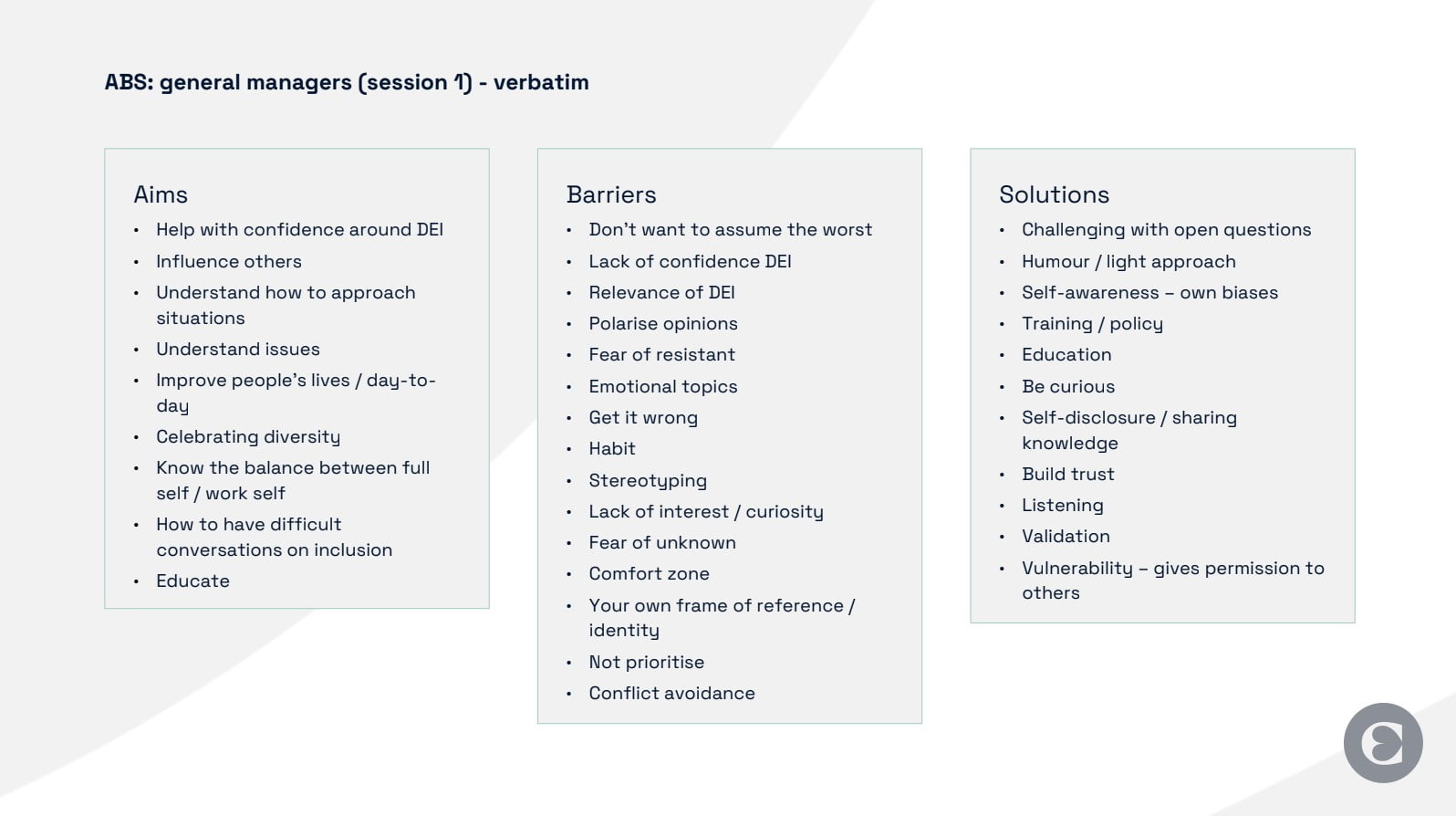
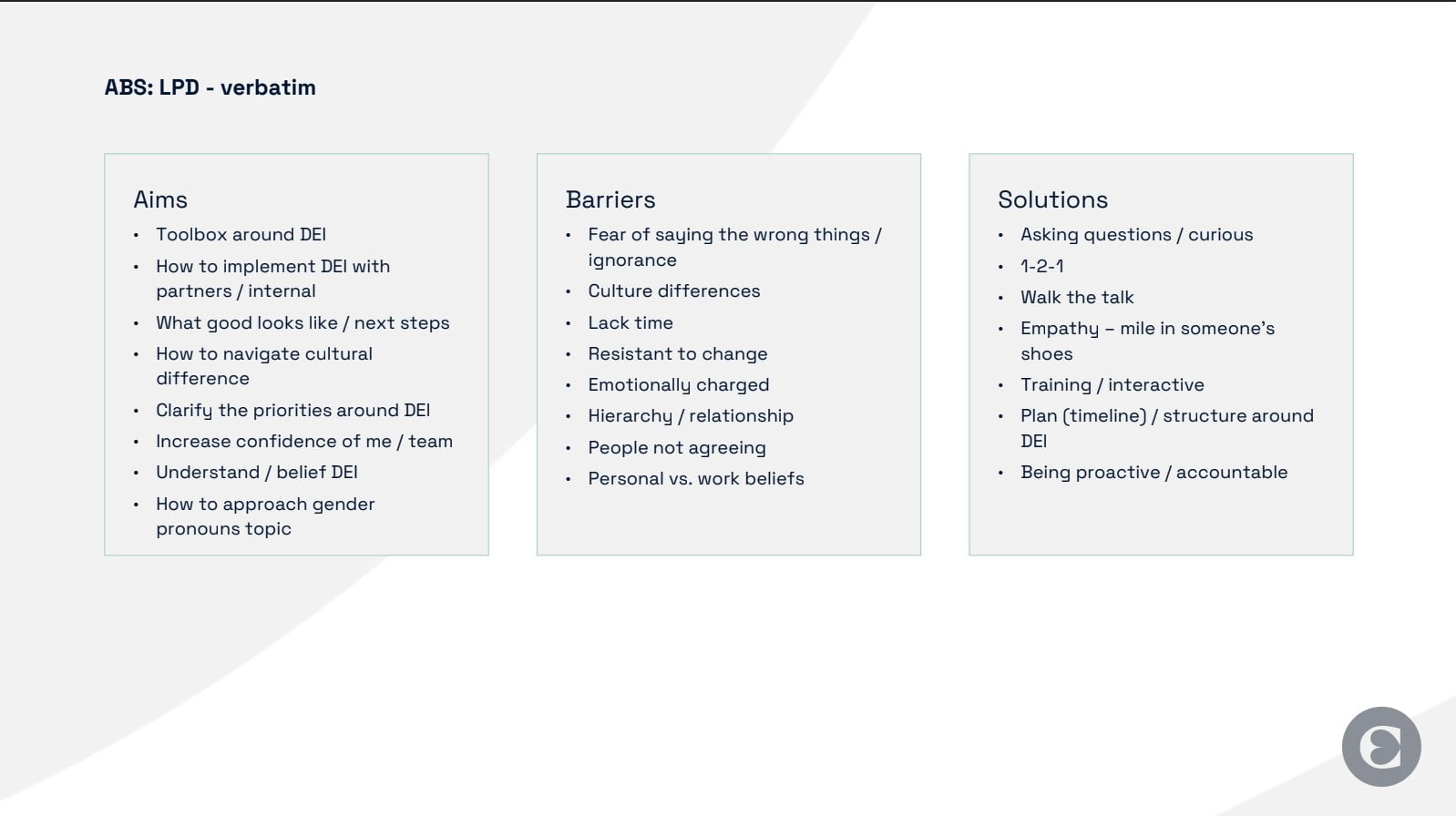
There were main themes overall throughout the series of workshops. Within aims, leaders focused on communication. They wanted to increase their confidence in communicating, work towards getting better at communicating DEI, holding difficult conversations and
coaching individuals. They focused on strategy – how could they implement change? What were their next steps and priorities? They also discussed a DEI toolbox that contained day-to-day tactics, tips and available resources.
A couple of barriers identified in the sessions were grouped into 1. fear – a fear of saying the wrong thing, making things worse and lack of confidence to speak up on issues and 2. the individuality of employees and different life experiences – the difference between people’s thinking at home vs at work, their biases, habits and comfort zones. To work on these barriers, delegates found a wide range of solutions based on three main areas including organisational strategies (policies, values and employment law), thinking and outlook
(empathy and giving the benefit of the doubt) and behaviour change (asking questions, being curious and listening).
ABS is a great tool for action planning within training sessions. We hope this information has inspired you to find effective methods to help put your learning into action. Do you need some help with action planning or want to chat with us about our training workshops? Get in touch with us via our contact page on our website.
Zara Huxley



